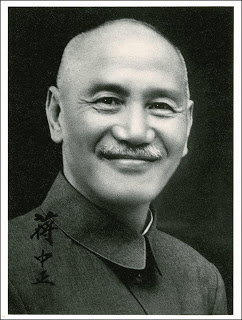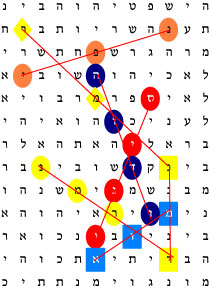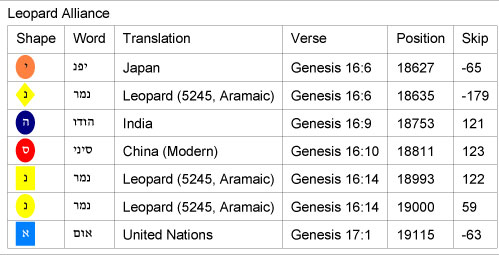The Yellow Peril
Since the early days of World War II, the when the Japanese took over a good portion of East Asia and the South Pacific, the media began to talk about a "yellow peril" that might some day afflict the United States and Europe. When they signed a treaty with Nazi Germany and Fascist Italy, that peril started to grow. But the interesting sub-war seemed to be between old enemies China and Japan. This war started in September of 1931 when Japanese forces moved out of Korea (a vassal state of Japan before the war), into the Chinese province of Manchuria.

The war would again erupt in 1937 when Japanese forces moved out of Manchuria into China proper. Since the Chinese were fractionated by numerous warlords and were poorly-equipped, they did not fare well against the Japanese. Eventually, much of their country fell under Japanese control until 1945 when Japan surrendered to the Allies. When that war was over, a new civil war erupted between the Communists and the Nationalist Chinese Army. This war would last until 1949 when the Nationalist forces, under their Christian leader Chiang Kai-shek (pictured to the right) were forced to retreat to Taiwan, while the Communists took over the mainland.
 After the Communists became the ruling power of the mainland, Mao Zedong (pictured to the right) ordered his forces to either get the "warlords" to submit to his power or be annihilated. Some estimate that 20 million Chinese died in these "police actions." During this time, they used the military equipment that Japan was forced to leave behind to embellish their own army. They also began to get aid from the Soviet Union to further complete their rebuilding process.
After the Communists became the ruling power of the mainland, Mao Zedong (pictured to the right) ordered his forces to either get the "warlords" to submit to his power or be annihilated. Some estimate that 20 million Chinese died in these "police actions." During this time, they used the military equipment that Japan was forced to leave behind to embellish their own army. They also began to get aid from the Soviet Union to further complete their rebuilding process.
 The next time we heard of China, they were massing their hordes to move into North Korea to drive back the "United Nations" forces. The U.N. forces had successfully taken most of North Korea and were preparing to set up a new provisional government for all of the Korean Peninsula. General Douglas MacArthur (pictured to the right) was even considering removing a couple of divisions from Korea, when intelligence reports came in that the Chinese were massing their troops at the North Korea border at the Yalu River. When the Chinese attack came, the United Nations troops were driven back. Only a bold counter-move by General MacArthur saved the U.N. Armies.
The next time we heard of China, they were massing their hordes to move into North Korea to drive back the "United Nations" forces. The U.N. forces had successfully taken most of North Korea and were preparing to set up a new provisional government for all of the Korean Peninsula. General Douglas MacArthur (pictured to the right) was even considering removing a couple of divisions from Korea, when intelligence reports came in that the Chinese were massing their troops at the North Korea border at the Yalu River. When the Chinese attack came, the United Nations troops were driven back. Only a bold counter-move by General MacArthur saved the U.N. Armies.
 The Korean War ended in a "cease fire" compromise in 1953, but the viability of China as a potential world power could no longer by dismissed. The remained isolated from the rest of the world until 1972 when President Nixon visited China and signed the first of many accords with them. They were admitted to the United Nations later in the year and took their place as a permanent member of the Security Council. But now that we know the history, what do the Bible Codes say about China and its potential status as a Leopard nation? Let's take a look at the image to the right.
The Korean War ended in a "cease fire" compromise in 1953, but the viability of China as a potential world power could no longer by dismissed. The remained isolated from the rest of the world until 1972 when President Nixon visited China and signed the first of many accords with them. They were admitted to the United Nations later in the year and took their place as a permanent member of the Security Council. But now that we know the history, what do the Bible Codes say about China and its potential status as a Leopard nation? Let's take a look at the image to the right.
The first thing to notice about the code is the number of times the Aramaic Hebrew word for Leopard appears in this code. It is designated by the letters in Yellow. In this simple 11 x 9 code we find it mentioned three times. But the real question is what are the countries in this code? Here is the answer:

The first two countries we discussed in this section: Japan and China, appear in this code, but another appears prominently in this code: India. Many years ago, it would have been very surprising to see India aligned with China. But in recent years, as Indian relations with the United States has started to cool off, India has started to receive assistance from China. The other phrase that is noticeable in this code the Hebrew acronym for the United Nations. It could be the alliance was formed in the halls of the United Nations. It is also interesting that Japan is now increasing its cooperation with China and the two old enemies are starting to become friends.
The trouble with this code though, is that we need to see more words. Seven words is interesting, but hardly conclusive in the development of code analysis. We have done this and all you need to do is click here to go to the next page.
